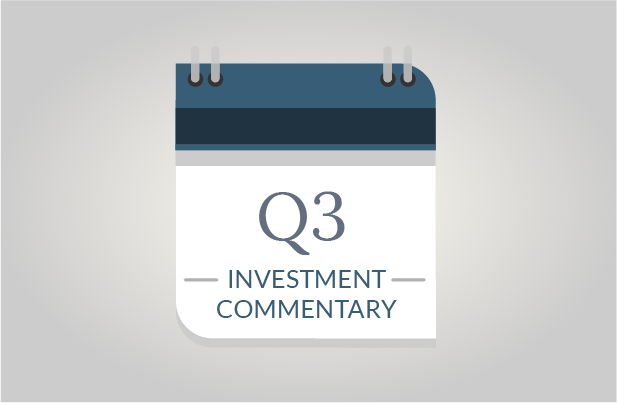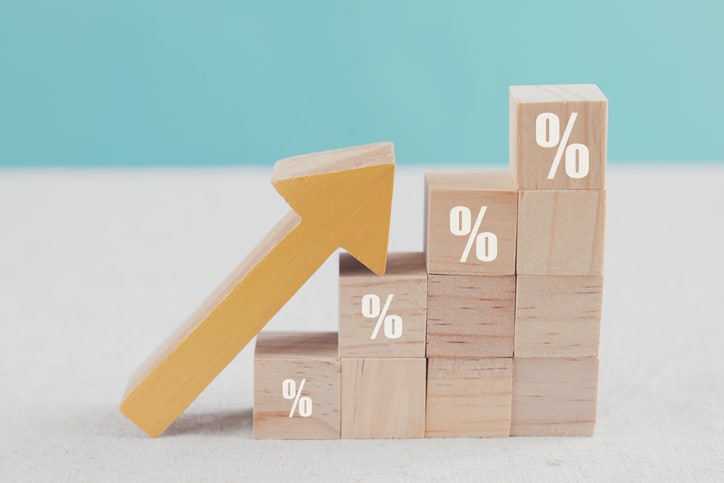- The stock market’s strong pandemic recovery hit a speed bump in the third quarter.
- Market volatility spiked in September largely due to concerns about China and inflation outlooks.
- Growth is still occurring, giving distinct opportunity ahead.
Headwinds Cause a Rocky End to the Quarter
The up-up-and-away stride of the stock market’s pandemic recovery continued for the majority of the third quarter, until September arrived. The S&P 500 apexed to set an all-time high on September 2nd, but then hit rocky waters leading to a net loss in stocks during the month of September.
Headwinds from several fronts reignited market volatility, causing the worst month’s performance in stocks since March 2020. Primary challenges included slowing growth, less accommodative stances from central banks, regulatory and debt contagion fears from China, waning pandemic fiscal stimulus, wrangling in Congress, ongoing supply chain bottlenecks and rising fears that inflation could be persistent and not transitory as the Fed has suggested.
These challenges led to pullbacks in stock and bond prices alike. Every sector of the S&P 500 other than energy suffered losses during September, pulling the index down almost 5% for the month. China’s entrance into bear market territory weighed on international stocks. Further, a recent spike in Treasury yields created modest losses as bond yields and prices move inversely to one another.
Fortunately, performance figures remain in healthy positive territory for the year, largely due to exceptional stock returns.
Volatility
Historically, stocks have experienced greater volatility in the months of September and October. This year proved to uphold that historical standard, at least for the month of September as investor appetite for risk diminished.
The largest market sell-off occurred on September 20th in response to debt contagion fears from China. Evergrande, one of the most highly leveraged companies in China, holding the highest debt level among all property development companies in the world, has been struggling to cover its debt obligations. Evergrande Group warned that it could default on its debts, which total more than $300 billion. This is an enormous amount that could cast ripple effects throughout the markets if a default ensues. Fortunately, the Chinese government is intervening, but the government has also been focused on business regulatory reforms that have sent the MSCI China Index into bear market territory (marked by a 20% greater decline) for 2021.
While China’s developments are significant given the size of Evergrande and the fact that China’s economy is the second largest in the world, it’s not the only contributor to volatility. There’s been a general pullback from riskier assets including non-profitable technology stocks, special purpose acquisition companies (SPACs), and initial public offerings (IPOs). There have also been reports of slowing growth and continued inflation.
Inflation
Inflation remains high and there’s increased discussion that it could continue to be a persistent versus a short-term transitory problem. Consumer demand is exceeding supply availability for several reasons. A decline in workers during the pandemic is resulting in too few workers to maintain and operate supply chains. At the same time, demands for technology and housing-related products are off the charts.
The pandemic created increased technology demands that are now resulting in significant semiconductor chip shortages. Semiconductors are the world’s fourth most traded good after crude oil, refined oil and cars. They’re needed in cars, computers, monitors, TVs, refrigerators, washing machines and more. All these industries are feeling the pain of semiconductor shortages and prices are rising as a result.
The housing boom isn’t helping either. Low interest rates coupled with people seeking additional space have created significant demand for houses and all things housing related. The S&P CoreLogic Case-Shiller National Home Price Index, an index that measures average home prices in the US, rose 19.7% over the prior twelve months ending July 2021.
Inflation will eventually ebb, but the question is when, and how much of a problem will it become until then.
Central Banks
Accommodative fiscal stimulus from the Federal Reserve (Fed) and other world central banks over many years have helped fuel growth, particularly in stocks. Central banks have flooded financial markets with liquidity.
Recent inflationary pressures are now forcing central banks to tighten their policies in hopes of taming inflation. The European Central Bank has already said it will reduce its level of asset purchases (slowing the flow of liquidity into the markets). Expectations are growing for the Fed and other central banks to follow similar less accommodative steps, perhaps sooner than previously expected.
It’s important to recognize that the financial markets have operated for decades without the kind of assistance that central banks have extended in recent years. Hence, a less accommodative structure does not mean an end to growth. There have been plenty of years where the economy and the markets have flourished in the absence of fiscal stimulus or accommodative central bank policies. What it does mean is that change and less liquidity could be on the horizon, which are two things that stock markets don’t like.
Congress
Speaking of change, there’s a flurry of financial-related activity in Congress between the Build Back Better Act (enacting tax reforms), the Infrastructure and Jobs Act and raising the debt ceiling. Where each of these efforts will lead is currently unknown. Fortunately, President Biden signed Congress’ stopgap funding bill to keep the government running through December 3rd, giving temporary relief to one element of uncertainty.
Different parties certainly have different outlooks on whether the proposed Acts will have positive or negative effects on the economy and the markets. Higher taxes on individuals and corporations could dilute growth potential. Conversely, additional spending on infrastructure and other measures could spawn a growth effect. The ultimate outcome will only be known in the future.
While it’s unknown what will be enacted this year, or what any final legislation might entail, we are looking carefully at proposed tax changes, their impact on our clients and planning actions that might warrant consideration.
Continued Spending and Growth
Finally, regardless of any additional government spending measures, we recently got good news post the quarter’s end that consumers are continuing to spend. Consumer spending decreased in July (causing some earlier concern), but experienced a healthy increase in August. Personal income was also up for the month of August. Furthermore, US and world growth outlooks remain healthy. Hence, despite recent market woes, it’s important to remember that growth and expansion are still very much alive, giving ample opportunity for markets to flourish further.
Looking Forward
SageVest distinctly does not believe in market timing as it can be a dangerous investment strategy. We believe in developing an investment posture that is appropriate relative to your needs and goals, and one that you’re comfortable with from a risk perspective. If you have any questions about your investment positioning or broader finances, we always encourage you to contact us to discuss them.
SageVest Wealth Management




